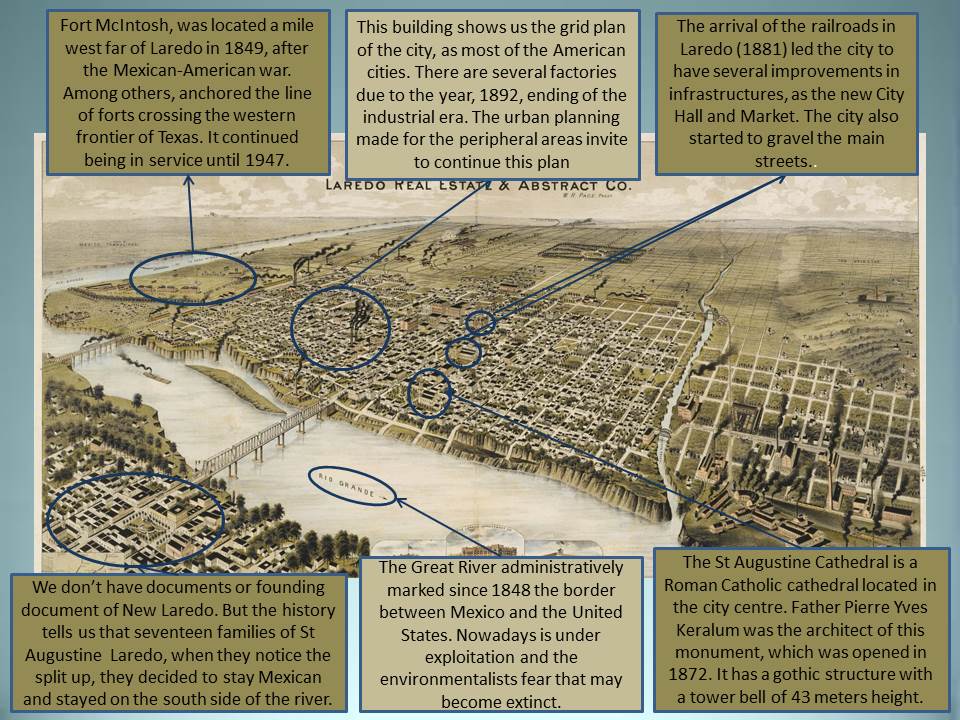LAREDO, USA (Henry Wellge, 1892)
This work of art is part of a collection of the “Amon Carter Museum of American Art” located in Fort Worth, Texas. This image represents the city of Laredo, Texas, around 1892. It was painted by Henry Wellge (1850-1917) known as one of the best bird’s-eye-view artists. Born in Germany, he produced around 150 city views in the XIX century. This painting is characteristic of the pictorial map style, showing an area as if viewed from above at an oblique angle. This type of painting centered its attention on the structure and morphology of the cities, also its urban plan and the economic activities during the late XIX century.
This painting portrays the exponential expanding process that was suffering the city and how Laredo becomes the gateway to Mexico, all due to the arrival of the railroads in the city (1881). After the Mexican-American war (1846-1848) Laredo was forced to split by the “Treaty of Guadalupe Hidalgo” (1848) in which it was determined that the Great River would act as a natural and political frontier between Mexico and USA. The division let us two different cities, at the North side of the river, Old Laredo, headquarters of the County, Webb, property in USA, and on the South side the Mexicans forced to emigrate found New Laredo, Tamaulipas, property of Mexico. The two different Laredo cities are joined only by two steel bridges that come across the Great River. The town planning is orthogonal plan as in the most of the American colonial cities founded by Spanish. This grid plan used to have a church and a city council in the center although in here we can appreciate some factories too. The grid was also used because it was easier for communication and for defense in case of war.
Concerning the streets, we can say that they suffered great changes, introducing new buildings as the new Webb County Courthouse, the city hall and the market house. The city is organized absolutely around the central part of the image. The structure of the old buildings was very simple because the city was plenty of modest one-floor buildings. But the new changes due to the prosperity the city starts to sprawl out in an exponential rhythm, the city starts to shelter several shops or markets to meet public demand that the expansion required at that time. The cathedral at the south central part of the image is another element which gives prosperity to the city meeting the religious demand the city needed. At the left margin we can see the Fort McIntosh, built in 1849, to protect the entire west Texas border. And at the right margin, we can see all the primary sector of the city organized by parcels with the exception of a factory which is a wedge in the environment.
It is curious to note that the railroads brought prosperity, newcomers and profits to Laredo, but not without a sacrifice, as a consequence of this fact, the steamboat traffic on the river started to decrease as the city starts to exceed the amount of water they were extracting of the Great River to the irrigation, so the boats used to run aground. We should mention also some facts about the community of the city which was traditionally considered Mexican but with a huge amount of newcomers Anglo-Americans the culture started to break into a separated Anglo society, and the change becomes more latent if it’s possible with the turn of the century.
Daniel del Moral González

